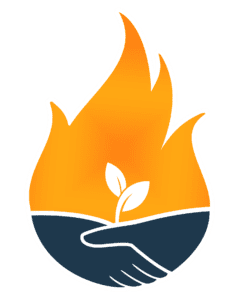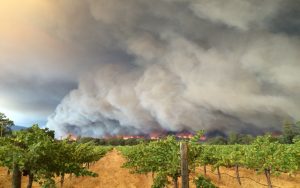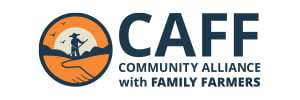DISASTER RECOVERY
In the aftermath of a disaster, it might seem like there’s no hope. But in fact, a number of resources exist for survivors as well as affected farms and communities. From financial aid to techniques that help restore your land after a fire, we’ve compiled these resources to help get you back on your feet.


FINANCIAL AID
Whether you lost your home, property, crops, livestock forage or a job, there are many options that might help you recoup your losses.


FEMA: Disaster Assistance
If you are a disaster survivor, you may qualify for federal assistance. This site helps to identify services during a disaster and apply for federal disaster assistance immediately after a disaster.

NRCS Disaster Recovery Assistance
From floods to drought, fire or hurricanes, NRCS provides disaster recovery assistance to farmers, ranchers, landowners and communities through a variety of USDA programs. If you are an agricultural producer affected by a disaster, please contact your local USDA service center for

NRCS Catastrophic Fire Recovery Initiative
The purpose of the Catastrophic Fire Recovery Initiative, offered by NRCS, is to provide immediate resource protection in areas burned by catastrophic fires. Priority resource concerns include immediate soil erosion protection, minimize noxious and invasive plant proliferation, protect water quality,

Navigating Disaster Assistance for Farmers
Assistance from federal programs can make a world of difference for farmers after a disaster. The next few pages outline current disaster programs, all of which are available to farmers. Be sure to check with the appropriate agency for any

Livestock Forage Disaster Program
The Livestock Forage Disaster Program (LFP) provides payments to eligible livestock owners and contract growers who have covered livestock and who are also producers of grazed forage crop acreage (native and improved pasture land with permanent vegetative cover) that has

Emergency Assistance for Livestock, Honeybees & Farm-Raised Fish Program
The Emergency Assistance for Livestock, Honeybees and Farm-Raised Fish Program (ELAP) provides emergency assistance to eligible producers of livestock, honeybees and farm-raised fish. It covers losses due to an eligible adverse weather or loss condition, including blizzards, disease (including cattle

Tree Assistance Program
Provides financial assistance to eligible orchardists and nursery tree growers to replant or rehabilitate eligible trees, bushes, and vines lost by natural disasters. Eligible trees, bushes, and vines are those from which an annual crop is produced for commercial purposes.

Noninsured Crop Disaster Assistance Program
NAP provides financial assistance to producers of noninsurable crops when low yields, loss of inventory, or prevented planting occur due to natural disasters.

LAND MANAGEMENT POST-DISASTER
Disasters can wreak havoc on your land. How you manage your land in the weeks and months following a disaster will determine well those natural resources recover.


Wildfire Recovery: The Nuts And Bolts Of Resilience With TurkeyTail Farm
Farmers Cheetah and Samantha run TurkeyTail Farm in Yankee Hill, California. During the Camp Fire in Butte County, they were evacuated for 28 days and lost everything but their livestock to severe fire damage, In this two-part blog series, the farmers share

5 Key Wildfire Resilience Practices
It’s not always obvious that some of the ecological farming practices used frequently by farmers, also provide wildfire protection and recovery benefits. Check out the infographic below which was developed by our cross team at CAFF to learn more! Click

Climate Intervention with Biochar
A White Paper about Biochar and Energy (BC&E) for Carbon Dioxide Removal (CDR) and Emission Reduction (ER).

An Overview of Fire Effects on Soil
Fires in forests and rangelands produce some of the most profound impacts on ecosystems of the Southwest. Wildfires and prescribed fires affect the vegetation, soils, wildlife, and water resources of watersheds. They impose a wide range of effects depending on

Sonoma Biochar Project
Biochar is a specialized form of charcoal that is produced by heating biomass using high heat (typically 350 C to 1000 C) in low-oxygen environments, and that is suitable for use in agriculture. It is commonly used as a soil

Mycoremediation in the Wake of the “Camp” Fire
This video outlines some of the concepts and research of fungal bioremediation and the potential to address fire-borne toxins. Topics covered are the types of environmental pollutants that are generated in forest fires and urban firestorms, how and which fungi

Burned Oaks: Which Will Survive?
Each year fires burn thousands of acres where the predominant vegetation is oak tress and grass. Where fires burn intensely, trees can be totally consumed. In other places, leaves on trees can be scorched, but the trees remain standing. Where

LIVESTOCK AFTER A DISASTER
Disasters can greatly affect the health of your animals. Help ensure a sound recovery for everyone living on your farm or ranch.


To Graze or Not To Graze
Determining when to graze livestock after a fire can be a controversial and sometimes difficult decision. Much of the post-fire consideration depends upon site characteristics (percent slope, soil type), plants that grew in the area burned, and intensity of the

When Wildfire Hits the Ranch: Lessons Learned
Just as quickly as the Thomas Fire swept through parts of our community, the questions started flooding my office: Should we prune our burned avocado trees? Can I graze my cattle on burned pastures, and if not, how can I

Wildfires, Smoke & Livestock
Severe wildfires expose humans and animals to injuries both from burns and inhalation of unhealthy air containing smoke and particulates. These particulates can build up in the respiratory system, causing a number of health problems including burning eyes, runny noses

Livestock Indemnity Program
The Livestock Indemnity Program (LIP) to provide benefits to eligible livestock owners or contract growers for livestock deaths in excess of normal mortality or reduced sale prices for owned livestock due to injury caused by eligible loss conditions. Eligible loss

Produce Safety & Food Recovery
Is your produce safe to eat after a disaster? And how can farmers assist in feeding those in feed? And how do you keep your business going in the aftermath?


Food Safety After a Disaster
A comprehensive website from UC Davis featuring many post-disaster resources exploring food safety for producers and consumers alike.

Smoky Character in Wines
Smoke flavors in grapes and wine were a concern in the 2008 growing season following the Mendocino Lightning Fires of June 20-July 20. Most research has been done in Australia during the past decade. These are articles that you may want

Keep Your Food Safe During Emergencies
Power Outages, Floods & Fire. Keep an appliance thermometer in both the refrigerator and freezer. Make sure the refrigerator temperature is at 40 °F or below and the freezer is at 0 °F or below. Group foods together in both

Tips for Handling Food Following a Disaster
If any type of unexpected emergency strikes your community, you may not have access to fresh food, water or electricity for days, maybe weeks. This web page is a portal site that will provide you with useful information so you

Fires and Food Safety, USDA
Fire! Few words can strike such terror. Residential fires are, unfortunately, a common occurrence. Some 2 million American homes go up in flames yearly. In the aftermath of fire, people are left to salvage their lives and belongings. Whether it’s

Produce Safety after Wildfire
The fires that spread through Northern California in October 2017 burned over 160,000 acres of wildland, suburban, urban and industrial areas, creating dangerous air quality conditions for the region that lasted long beyond the fires themselves. The wildfire smoke likely

How to Recover Fire Damaged Grapevines
Fire-damaged crops must be tended to carefully and consistently, or you risk losing them altogether. This is especially true for very sensitive crops like grapevines. The recovery process for a fire-damaged grapevine should begin as soon as possible after the

COMMUNITY RESPONSE & RECOVERY
Tips and resources to help your community work together to ensure an effective, equitable recovery.


Before Disaster Strikes
Is your farm ready for a natural disaster? We know it’s not easy to find time for all of today’s chores, let alone time to prepare for all the events that might or might not happen. But a little preparation now could save you countless hours, heartache, money and even your life and the lives of those you love. Check out these resources to help prepare your home, land, family, animals and community for the very real possibility of disaster.



And to the hundreds of California farms, individuals and businesses that donated to The Just & Resilient Future Fund




